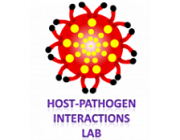Citation:
Abstract:
We have recently developed a method to quantitate the fusion of reconstituted viral envelopes with cells by fluorescence photobleaching recovery (FPR) (Aroeti, B & Henis, Y I, Biochemistry 25 (1986) 4588). The method is based on the incorporation of non quenching concentrations of the fluorescent lipid probe N-(7-nitrobenz-2-oxa-1, 3-diazol-4-yl)phosphatidylethanolamine during the reconstitution of the viral envelopes (the latter probe does not incorporate efficiently into the membrane of native virions). In the present work, we employed the fluorescent dye octadecyl rhodamine B chloride (R18), which can be incorporated directly into the membrane of native enveloped virions, to extend the FPR method to study fusion between native Sendai virions and intact human erythrocytes. The R18 fluorescence was found to be quenched in the viral envelope at the concentration range required for the FPR experiments, possibly due to preferential insertion of the probe into specific domains in the viral membrane. We therefore developed a correction (presented in the Appendix) which takes into account the lower quantum yield of the probe molecules in the membranes of unfused virions in the calculation of the fraction of fused virions from the FPR experiments. The results demonstrate that the method does indeed measure virus-cell fusion, and that the contribution of exchange to the measurements is not significant. The applicability of the method was further verified by the similarity of the results to those obtained independently by fluorescence dequenching measurements, and its ability to measure the distribution of virus-cell fusion within the cell population was demonstrated. These results suggest that the use of R18 can enlarge the scope of the FPR experiments to study the fusion of native virions with cells.

